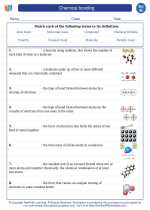Introduction to the Arctic
The Arctic is a region located at the northernmost part of the Earth. It is characterized by its cold climate, unique wildlife, and vast expanses of ice and snow. The Arctic encompasses the Arctic Ocean and parts of Canada, Russia, Greenland, the United States (Alaska), Norway, Sweden, Finland, and Iceland.
Climate
The Arctic has a cold and polar climate, with temperatures often dropping below freezing for much of the year. The region experiences long, dark winters and short, cool summers. The average temperature in the Arctic is around -34°C (-29°F) in winter and 3°C (37°F) in summer.
Arctic Wildlife
The Arctic is home to a diverse range of wildlife, including polar bears, Arctic foxes, reindeer, seals, walruses, and various species of birds. Many of these animals have unique adaptations that allow them to survive in the extreme cold and harsh conditions of the Arctic environment.
Landforms and Ice
The Arctic landscape is dominated by ice, including glaciers, ice caps, and sea ice. The region also contains tundra, which is characterized by low-lying plants, mosses, and lichens. The Arctic is home to the Arctic Ocean, which is almost completely covered by sea ice in the winter.
Human Impact
Human activities, such as oil and gas exploration, shipping, and tourism, have started to have a significant impact on the Arctic environment. Climate change is also causing the Arctic ice to melt at an alarming rate, leading to concerns about the future of the region and its wildlife.
Conclusion
The Arctic is a unique and important region that plays a crucial role in the global climate system. Understanding the Arctic environment and the challenges it faces is essential for addressing the environmental issues that affect this remote and fragile ecosystem.
[Arctic] Related Worksheets and Study Guides:
.◂Science Worksheets and Study Guides Eighth Grade. Chemical bonding

 Worksheet/Answer key
Worksheet/Answer key
 Worksheet/Answer key
Worksheet/Answer key
 Worksheet/Answer key
Worksheet/Answer key
 Vocabulary/Answer key
Vocabulary/Answer key
